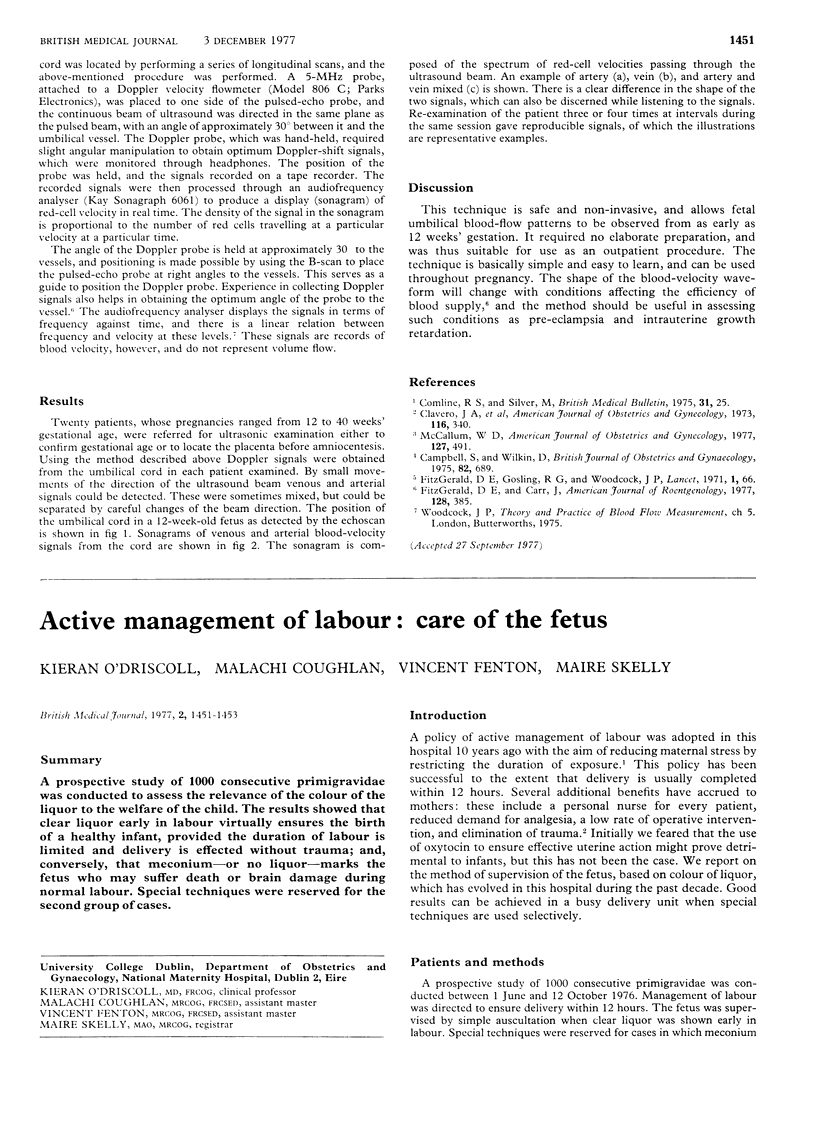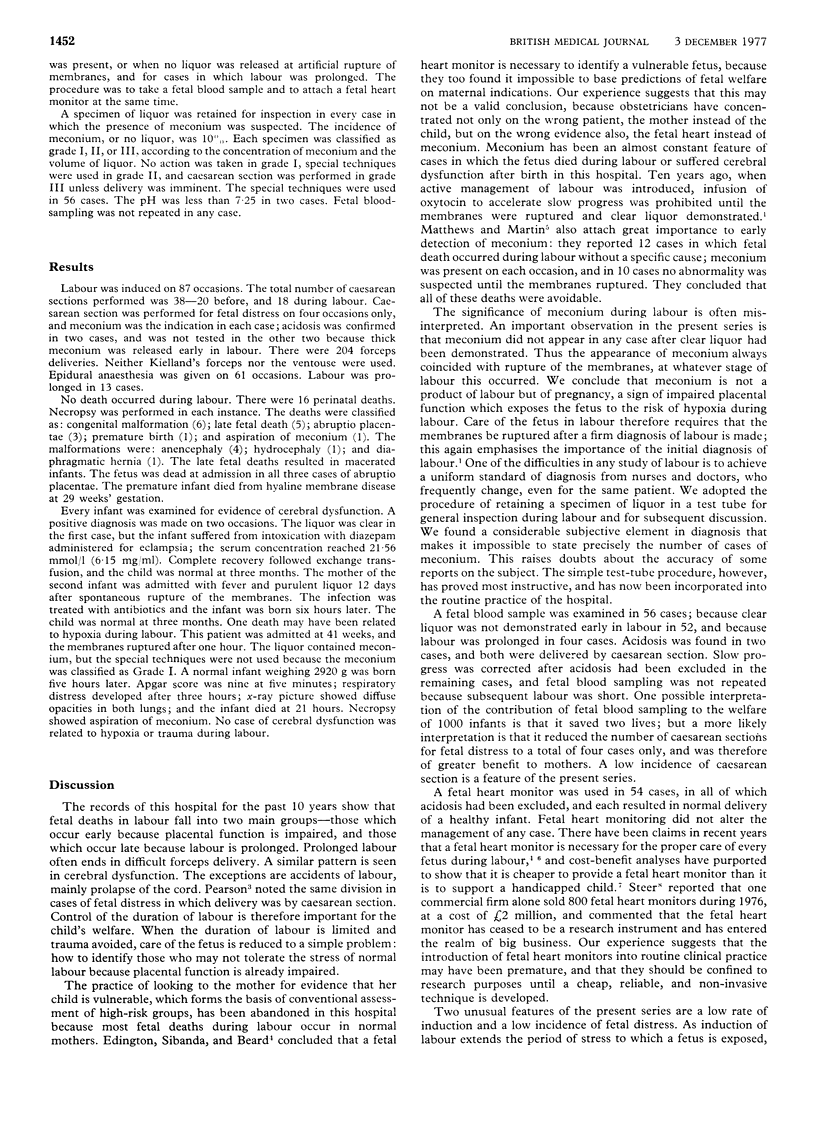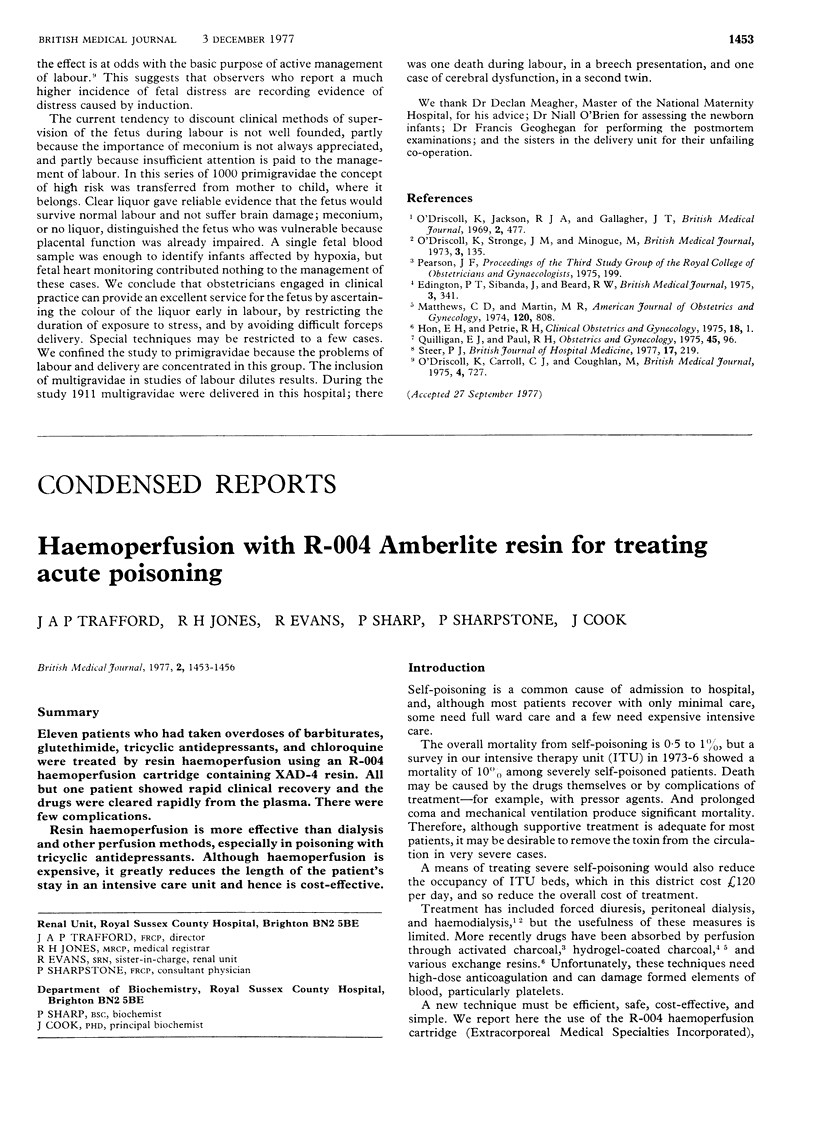Abstract
A prospective study of 1000 consecutive primigravidae was conducted to assess the relevance of the colour of the liquor to the welfare of the child. The results showed that clear liquor early in labour virtually ensures the birth of a healthy infant, provided the duration of labour is limited and delivery is effected without trauma; and, conversely, that meconium--or no liquor--marks the fetus who may suffer death or brain damage during normal labour. Special techniques were reserved for the second group of cases.
Full text
PDF


Selected References
These references are in PubMed. This may not be the complete list of references from this article.
- Edington P. T., Sibanda J., Beard R. W. Influence on clinical practice of routine intra-partum fetal monitoring. Br Med J. 1975 Aug 9;3(5979):341–343. doi: 10.1136/bmj.3.5979.341. [DOI] [PMC free article] [PubMed] [Google Scholar]
- Hon E. H., Petrie R. H. Clinical value of fetal heart rate monitoring. Clin Obstet Gynecol. 1975 Dec;18(4):1–23. doi: 10.1097/00003081-197512000-00003. [DOI] [PubMed] [Google Scholar]
- Matthews C. D., Martin M. R. Early detection of meconium-stained liquor during labor: a contribution to fetal care. Am J Obstet Gynecol. 1974 Nov 15;120(6):808–811. doi: 10.1016/0002-9378(74)90585-7. [DOI] [PubMed] [Google Scholar]
- O'Driscol K., Carroll C. J., Coughlan M. Selective induction of labour. Br Med J. 1975 Dec 27;4(5999):727–729. doi: 10.1136/bmj.4.5999.727. [DOI] [PMC free article] [PubMed] [Google Scholar]
- O'Driscoll K., Jackson R. J., Gallagher J. T. Prevention of prolonged labour. Br Med J. 1969 May 24;2(5655):477–480. doi: 10.1136/bmj.2.5655.477. [DOI] [PMC free article] [PubMed] [Google Scholar]
- O'Driscoll K., Stronge J. M., Minogue M. Active management of labour. Br Med J. 1973 Jul 21;3(5872):135–137. doi: 10.1136/bmj.3.5872.135. [DOI] [PMC free article] [PubMed] [Google Scholar]
- Quilligan E. J., Paul R. H. Fetal monitoring: is it worth it? Obstet Gynecol. 1975 Jan;45(1):96–100. [PubMed] [Google Scholar]


